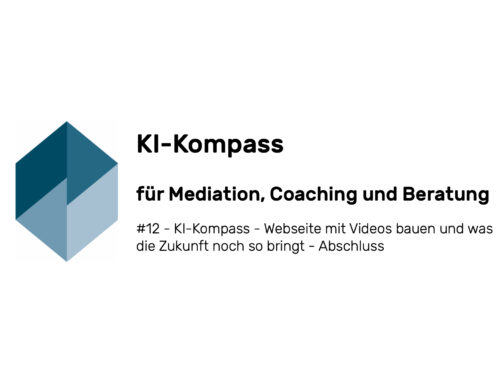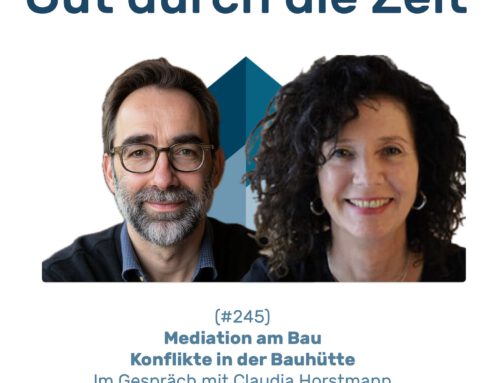Mediation for spouses in separation and divorce.
An overview of topics for mediators
From time to time, I also take on the processing and counselling of separation and divorce conflicts. And this usually leads to separation and divorce mediation with the spouses. In comparison with organisational mediation, these are – for me first and foremost educational variety!
The complexity of the issues and points of contention is by no means only a result of a family's long-standing relationships, but also of the „cross-cutting issues“ that arise during a separation and divorce: It may be about (cold, warm or rekindled) love, but it is also about (existing, suspected, doubted, put aside or desired) money, it is about (affirmed, reproached, disputed, It is about values (asserted, reproached, disputed, disgusted) as well as about the past and, above all, the future, about what has died and what is sprouting, about fears and shackles, about longings and wings that are wished for, hoped for, longed for, but that also need to be trimmed, kept small, held in check – and whoever musters the strength for this does not have to be the one to take responsibility.
The riches of (family) life are brought to the table in their entirety, where they are to be sifted, layered and mediated. Mediation is – at least the beginning – of a balance sheet, but also of a new adventure that wants and needs to be experienced alone. But that is an enormous amount.
This article is intended to Overview of the variety of topics which regularly arises when conducting mediation in a separation and divorce conflict – and therefore written primarily for mediators.
Separation and divorce mediation offers couples the opportunity to organise their separation amicably and fairly, but above all comprehensively. In this process, everything that is relevant to the separation and divorce process as a whole can be discussed.
- Some things are relevant because they are provided for by law and must be discussed and regulated in separation and divorce mediation.
- Other things are only relevant to the specific people involved because they relate to their specific situation, their idiosyncrasies, personal likes and dislikes.
- And few things will perhaps only be relevant for one of the spouses – and yet this process offers the opportunity to „officially“ address this. This is both the openness and the imposition of the mediation process.
Below I list the most important points that I have encountered in my practice and that I have on my „list“ as a mediator.
In the event that not everything is addressed by the participants, I always allow myself (and clarify this with the participants in advance) to address the points on this list and ask to what extent the participants need to discuss these topics. This can sometimes be risky (neutrality and making mistakes!), but it is necessary. It is therefore methodically important to discuss this list with the parties involved on a good contractual basis, so that addressing – points that may be sensitive for one side – does not come across as repulsive, but rather in the service of a completely amicable separation.
Sometimes the question is: amicably or peacefully through the mediation process?
Because one thing is that a separation and divorce of two extensively „socially established and integrated“ life concepts consensual It is another thing for it to be peaceful and polite. For me as a mediator, it is much more important that it is consensual, which may also mean fighting, aggression, expressions of anger, annoyance and pain, than that it is peaceful, calm, kind, courteous and polite and that mediation acts more as a socially disciplinary painkiller and soporific than as a clarifier and solvent.
Marital home
Who will continue to live in the marital home? One of the first questions that needs to be clarified is who will stay in the shared home after the separation. The decision often depends on various factors, such as the care of joint children, the financial situation and the emotional attachment to the home.
Household contents
We humans not only lose ourselves in the things we have bought, but we also find ourselves in them.
If a new home has been found and rented for the partner who is moving out, the question arises as to the continued use and thus the whereabouts of the (jointly purchased) household contents. What exactly happens to the household contents? The household contents, i.e. furniture and other furnishings, must be divided fairly. This can be done by mutual agreement or, in an emergency, by a court decision. Under no circumstances should there be an unspoken assumption that the existing household effects were purchased for the existing matrimonial home and must therefore remain there.
Practical tip: As a mediator, the Household contents the opportunity to involve the participants in concrete negotiation processes about things that do not have too much value for the parties involved, but the value and experience of a negotiation process with the separation and divorce partner allows!
Practical tipOften the parties involved enter into negotiations in such a way that everything should remain as it is, but a financial settlement should be negotiated. There are two things to consider here. On the one hand, there are (always!) objects in the household that one person is more fond of than the other and that have an identity-forming effect without this being easy to name in a conversation. This could be a wine opener or a fridge magnet, but also plates, special cups, bathroom mirrors or a carpet. We humans not only lose ourselves in the things we have bought, but we also find ourselves in them, as Frank Trentmann, a German social and consumer historian, has summarised. On the other hand, it is almost impossible to put a price on them, so that the equalisation amount (for the household goods that are to remain in the marital home) is always perceived as unfair, overpriced or far too little.
As a mediator, take the opportunity here to be effective, ask for specific objects, mementos that can also be found in the kitchen unit and organise a specific negotiation process. Negotiating is fun, but it needs to be learnt and practised. And for the upcoming issues of separation and divorce, this will be very supportive.
Separation maintenance
Separation maintenance is the maintenance that one spouse pays to the other spouse. during the separation phase, but before the divorce, must pay. Please note: Separation maintenance can only be paid to separated spouses, but not to unmarried spouses. This maintenance is intended to ensure that the financially weaker spouse can maintain their standard of living despite the physical separation. Mediation must therefore at least address and clarify whether there is a financial gap between the spouses.
Pension equalisation
Pension equalisation concerns the pension entitlements acquired during the marriage. The aim is to distribute the pension entitlements of both spouses equally in order to ensure financial security in old age.
Spousal maintenance and post-marital maintenance
After divorce, a spouse may be entitled to spousal maintenance to secure their livelihood. This maintenance depends on the neediness of one partner and the ability of the other, as well as the duration of the marriage and the agreements made during the marriage.
Debts and loans
Here it must be clarified how joint debts and loans, e.g. for a house, car or studies, are to be divided up. It is important to find a fair solution that does not place an excessive financial burden on either party.
Asset allocation
Real estate, business shares and stocks, savings: Assets acquired during the marriage must be divided fairly. This applies to property, company shares, shares and savings. A detailed inventory and valuation of the assets is necessary for this.
Inheritance claims of the spouses
During the separation phase and also after the divorce, there may be claims under inheritance law. These should be clarified at an early stage in order to avoid misunderstandings and future disputes.
For marriages with children
Child maintenance
The parent liable for maintenance must pay for the maintenance of the children. The amount of maintenance is based on the Düsseldorf table and depends on the income of the parent liable for maintenance. This can be discussed in mediation, but the actual calculations should be carried out by experienced professionals. If the mediator is a professional, they must consider whether to carry out this work themselves or outsource it in order to focus on their mediation task.
Child benefit
Child benefit is usually paid to the parent with whom the children mainly live. It should be clarified how this money will be used and whether it will be shared. For this reason, child benefit can only be discussed once the children's place of residence has been discussed and an arrangement has been found.
Custody and access rights regarding children
In addition to access rights, custody may also need to be regulated. A decision is made as to whether joint custody will remain in place or whether one parent will be awarded sole custody – or vice versa.
Access rights determine how often and under what conditions the non-custodial parent is allowed to see their children. The welfare and development of the children are paramount here. Regular and reliable contact times are important for the emotional stability of the children. There are different models for this, which often form the core for the success of mediation.
If both parents have custody, there are three different models (with different variants in detail) to choose from
- Residence modelIn this model, the child lives primarily with one parent. After separation and divorce, the child often lives with the parent who has been the main carer in recent years. In this case, the other parent has the right, but also the duty, to have contact with the child.
- Alternating model: Also known as the dual residence model. Here, the child or children live with both parents equally, so that they also share the care equally. Of course, the division does not have to be equal and can be adapted to practical requirements; what is important is the agreement and consent to the specific changes. In this model, the children often change on a weekly basis. However, it is also possible to organise changes every 14 days or monthly. All parties involved should give their consent, as this model requires a lot of logistics and willingness to adapt in practice. (Note: With the equal alternation model, no child maintenance has to be paid as long as the parents have roughly the same income. Otherwise, the parent who earns less receives a proportionate share of the "additional earnings" of the other parent).
- Nest model: This model creates a home for the child as a nest in which it can grow up – and the parents take it in turns to look after the child, but otherwise live in one or usually two other homes. The nest model is financially very expensive, but gives the children the opportunity not to have to find their way around or settle into other parental homes.
Other important points
In addition to the main points mentioned above, the following brief points can also be addressed in separation and divorce mediation:
- Insurances: It needs to be clarified which insurance policies exist (or remain) and who pays the premiums. This can sometimes not only mean agreement work, but also clarification work. This is because the separation is often the reason to deal with the (non-existent) insurance policies on both sides. This also applies to other contracts…
- e.g. household contents, liability and life insurance: It should be discussed who will take over which policies and who will continue to pay the premiums.
- Health insurance: Insurance cover may change after a divorce, especially if one partner was insured through the other's family insurance. It must be clarified how insurance cover will be guaranteed in the future.
- Contracts and financial obligations of the family: A comprehensive inventory should be made of all financial obligations, including leasing contracts, memberships, subscriptions and other regular payments. These need to be reviewed and adjusted:
- Motor vehicles, possibly two-wheelers or cargo bikes, etc.
- Streaming subscriptions (music, cinema, newspapers, etc.)
- Internet services (family cloud, etc.)
- Club memberships or similar.
- Regular donations
- Pets: Agreements on the whereabouts and care of shared pets.
- Tax aspects that sometimes also require further specialist advice (keyword: self-employed and [family] entrepreneurs!):
- Tax class change: After separation, the spouses must change their tax brackets. This can have financial consequences that need to be taken into account.
- Tax advantages and disadvantages: The tax consequences of maintenance payments and the division of assets should also be clarified in order to avoid unforeseen financial burdens.
- Private pension scheme: In addition to pension equalisation, private pension provision should also be taken into account. It must be clarified how private pension insurance policies or other pension products are to be divided.
- Planned major expenditure: Planned major expenses, such as renovations or purchases that have been jointly agreed, must be discussed and financed again. It should be clarified who will take on which obligations.
- Communication and conflict management: An agreement on future communication and how to deal with conflicts can help to keep the relationship on a constructive, co-operative level despite the separation. This is particularly important if children are involved.
- Professional changes: Separation or divorce can bring about career changes, especially if one partner has previously put their career on hold because of the family. It should be discussed how this partner can return to working life and what support is needed for this.
- Support from third parties: It can be helpful to discuss what role friends, family members or professional counsellors (such as lawyers or therapists) should play during and after the separation.





Leave A Comment